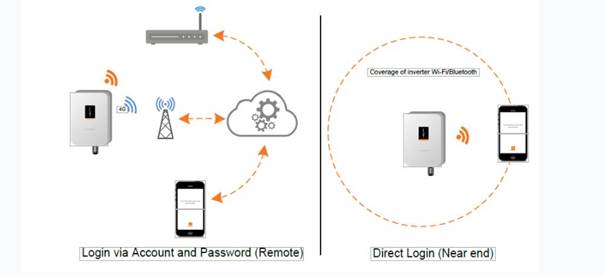Sungrow Power Supply Co., Ltd. is a well-established name in the solar industry, known for its inverter solutions used in residential, commercial, industrial, and utility-scale projects. Alongside inverters, the company also offers energy storage systems and intelligent PV plant technologies.
Sungrow’s data loggers — COM100E, COM100D, Logger1000A, and Logger1000B — connect to the iSolarCloud online platform and support monitoring for up to 30 devices. Each logger comes with 3 RS485 inputs and 4 analog inputs (supporting 4–20 mA or 0–10 V signals). You can connect one weather station to each RS485 port, and one analog sensor to each analog input. COM100D and Logger1000A support Ethernet, 4G, and WLAN, while COM100E and Logger1000B offer Ethernet and WLAN connectivity.

SEVEN supplies weather stations for PV projects that use Sungrow data loggers. As a Sungrow sensor partner, SEVEN ensures that its systems integrate smoothly. The typical weather station setup includes: Irradiance sensor, Module temperature sensor, Ambient temperature sensor, Wind speed sensor, Wind direction sensor, Relative humidity sensor All sensors are connected via SEVEN’s irradiance sensor box. This unit collects and transmits the data over RS485 using the Modbus RTU protocol, making integration with Sungrow loggers straightforward.
Irradiance Sensor: Also known as a PV pyranometer, this sensor measures solar irradiance in W/m², critical for evaluating the performance of photovoltaic systems.
Module Temperature Sensor: Measures the temperature of solar panels in °C.
Ambient Temperature Sensor: Measures the surrounding air temperature in °C.
Wind Speed Sensor: Also called an anemometer, it tracks how fast the wind is blowing in m/s.
Wind Direction Sensor: Measures where the wind is coming from, based on speed.
Relative Humidity Sensor: A hygrometer that shows how much moisture is in the air, expressed as a percentage.
About iSolarCloud

iSolarCloud is Sungrow’s monitoring platform that gives users a clear view of their PV system’s performance. The electricity generated by the solar panels flows through the inverter. The inverter’s job is to convert the direct current (DC) produced by the panels into alternating current (AC), which can be used by your devices. When using the iSolarCloud monitoring system, both the weather station and the inverters can be connected to the data loggers. This allows both the inverters and the weather stations to communicate with the iSolarCloud server to monitor solar energy production.
The system is flexible and works with many types of solar setups. It’s also compatible with Android and iOS devices. With iSolarCloud, users can check:
- Real-time and total power output
- Self-consumption and energy production
- Charts, graphs, and historical comparisons
- Device statuses, configuration info, and alerts
This setup — combining Sungrow’s reliable loggers and SEVEN’s accurate sensors — offers a practical, efficient way to monitor solar energy systems with confidence.